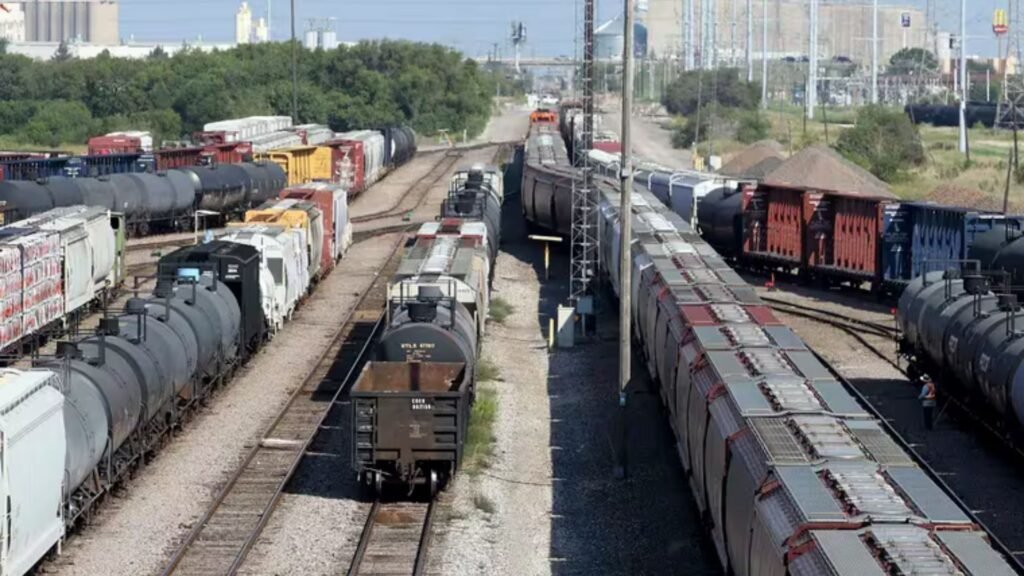Optimizing rail yard operations is essential for improving efficiency and reducing costs in the rail industry. In this article, we’ll guide you through effective strategies for achieving this goal. Whether you’re looking to enhance scheduling, streamline processes, or implement new technologies, these tips will help make your rail yard operations more efficient and effective.
Improve Scheduling and Coordination
One of the first steps in optimizing rail operations is to improve scheduling and coordination. Proper scheduling ensures that trains and cargo are managed efficiently, reducing delays and bottlenecks. Implementing a robust scheduling system helps align train arrivals, departures, and cargo handling, leading to smoother operations and better resource utilization.

Utilize Advanced Technology
To enhance rail operations, investing in advanced technology can make a significant difference. Modern rail yards benefit from systems such as automated train control, real-time tracking, and digital communication tools. These technologies improve the accuracy and speed of operations, reduce manual errors, and increase overall efficiency.
Streamline Cargo Handling Processes
Efficient cargo handling is a key component of optimizing rail yard operations. Streamline processes by implementing automated loading and unloading systems. These systems can handle cargo faster and more accurately than manual methods, reducing turnaround times and improving overall yard performance.
Enhance Data Analytics
Using data analytics is crucial for optimizing rail yard operations. Collecting and analyzing data on train movements, cargo handling, and operational performance helps identify inefficiencies and areas for improvement. By leveraging this data, you can make informed decisions to optimize scheduling, resource allocation, and overall yard management.
Invest in Staff Training
Properly trained staff is essential for effective rail yard operations. Invest in comprehensive training programs for your team to ensure they are familiar with the latest technologies, safety protocols, and operational procedures. Well-trained employees can handle tasks more efficiently and respond to issues promptly, contributing to smoother operations.
Implement Efficient Maintenance Practices
Regular maintenance is critical for optimizing rail yard operations. Implement efficient maintenance practices to ensure that all equipment, including trains, tracks, and loading systems, remains in good working condition. Preventive maintenance helps avoid unexpected breakdowns and keeps operations running smoothly.
Optimize Yard Layout
An optimized yard layout can greatly enhance rail yard operations. Review and adjust the layout to ensure that it supports efficient movement of trains and cargo. Consider factors such as track alignment, storage areas, and loading/unloading zones to create a layout that minimizes congestion and maximizes efficiency.
Improve Communication Systems
Effective communication is vital for optimizing rail yard operations. Ensure that communication systems are reliable and facilitate clear, timely exchanges between staff members, train operators, and management. Good communication helps coordinate activities, address issues quickly, and prevent misunderstandings that can disrupt operations.
Enhance Security Measures
Security is a crucial aspect of rail operations. Enhance security measures by implementing surveillance systems, access controls, and regular security checks. Ensuring the safety of your rail yard protects both personnel and assets, contributing to overall operational efficiency.
Adopt Lean Management Techniques
Adopting lean management techniques can help streamline rail operations. Focus on eliminating waste, reducing downtime, and improving process efficiency. Techniques such as 5S (Sort, Set in Order, Shine, Standardize, Sustain) and value stream mapping can help identify and address inefficiencies in your operations.
Optimize Resource Allocation
Efficient resource allocation is key to optimizing rail yard operations. Evaluate and allocate resources such as equipment, labor, and space based on operational needs and priorities. Proper resource management ensures that you have the right tools and personnel in place to handle tasks effectively and avoid bottlenecks.
Implement Real-Time Monitoring
Real-time monitoring is essential for optimizing rail operations. Use sensors, GPS, and other technologies to monitor train movements, cargo status, and equipment performance in real-time. This information allows for immediate adjustments and improvements, helping to prevent delays and optimize overall operations.
Foster Collaboration and Feedback
Encourage collaboration and feedback among team members to enhance rail operations. Create an environment where staff can share ideas, report issues, and suggest improvements. Collaborative efforts and open communication lead to innovative solutions and continuous enhancements in operational efficiency.
Review and Refine Processes Regularly
Regularly reviewing and refining processes is crucial for optimizing rail operations. Conduct periodic assessments of your operations to identify areas for improvement. Implement changes based on feedback and performance data to continuously enhance efficiency and effectiveness.
Conclusion
In conclusion, optimizing rail yard operations involves a combination of advanced technology, efficient processes, and effective management. By implementing these strategies, you can enhance the efficiency, safety, and overall performance of your rail yard. Continuous improvement and attention to detail are key to achieving long-term success in rail yard operations.



